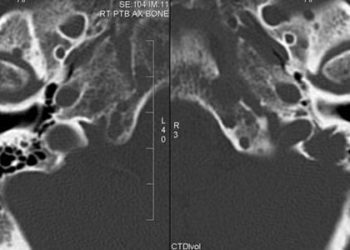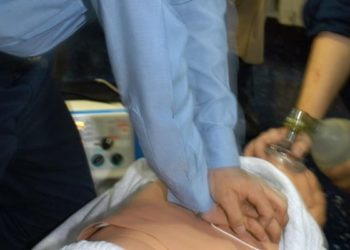Successful adoption of WHO Surgical Safety Checklist and introduction of pulse oximetry in resource-limited settings
Image: WHO
Key study points:
1. Concurrent adoption of the WHO Surgical Safety Checklist and introduction of pulse oximetry can lead to meaningful outcome improvements in resource limited settings.
Primer: The WHO Safe Surgical Safety initiative has been instrumental in introducing proven quality improvement interventions to the forefront of modern surgical practice all over the world. The most widely promoted and adopted of these interventions thus far has been the WHO Safe Surgical Safety Checklist. The checklist is a simple 19-item checklist covering the standards of surgical practice designed to reduce post-surgical complications and mortality in any operating room, anywhere in the world. However, the checklist has yet to be specifically tested in resource limited settings where access to some technologies such as pulse oximetry may be limited. The WHO Safe Surgery group sought to answer the question of whether or not the checklist could be implemented successfully in resource-limited settings to achieve meaningful improvements in surgical outcomes.
Background reading:
- Haynes AB,Weiser TG, Berry WR, et al. A surgical safety checklist to reduce morbidity and mortality in a global population. N Engl J Med. 2009;360:491–499.
- Merry AF, Eichhorn JH,Wilson IH. Extending the WHO “Safe Surgery Saves Lives” project through Global Oximetry. Anaesthesia. 2009;64:1045–1048.
This [pre vs. post-intervention ] study: was designed to study the implementation of the checklist in Chisinau, Moldova. The study coincided with the introduction of pulse oximeters to all 22 operating rooms involved in the study. Primary study endpoints were process adherence measures, major complications, and rates of hypoxemia (SpO2 <90% greater than 2 minutes). Over 2000 pre- and post-intervention cases were collected with significant improvements post-intervention as follows: safety process adherence increased from 0% to 66.9% (p<.001), overall complication rate decreased from 21.5% to 8.8% (p<.001), and episodes of hypoxemia per 100 hours decreased from 11.5 to 6.4 (P<.002).
In sum: It is especially challenging to make meaningful surgical outcome improvements in resource-limited settings, where even the most basic equipment such as pulse oximetry are lacking. This is the first study to examine efficacy of the WHO Surgical Safety Checklist with the introduction of pulse oximetry in such a setting. There was a significant 60% reduction in post-surgical complications following hospital-wide adoption of the checklist. This included a 35.7% reduction in hypoxemic episodes per 100 hours, underscoring the importance of inclusion of pulse oximetry in the most basic, standard surgical practice. This study was limited in that it was confined to a single institution without a control hospital. However, the study authors were unable to identify any other possible confounding cause of the dramatic study results. Finally, as is common with checklist studies, there was an observer present in many of the cases which can lead to a possible Hawthorne effect. However, there were similar observers present during the pre-intervention period that had no effect on process adherence measures, and the presence of an observer had no significant effect on the results when factored in as an independent variable.
Click to read the study in Annals of Surgery
By [AH] and [MS]
© 2012 2minutemedicine.com. All rights reserved. No works may be reproduced without written consent from 2minutemedicine.com. Disclaimer: We present factual information directly from peer reviewed medical journals. No post should be construed as medical advice and is not intended as such by the authors or by 2minutemedicine.com. PLEASE SEE A HEALTHCARE PROVIDER IN YOUR AREA IF YOU SEEK MEDICAL ADVICE OF ANY SORT.




